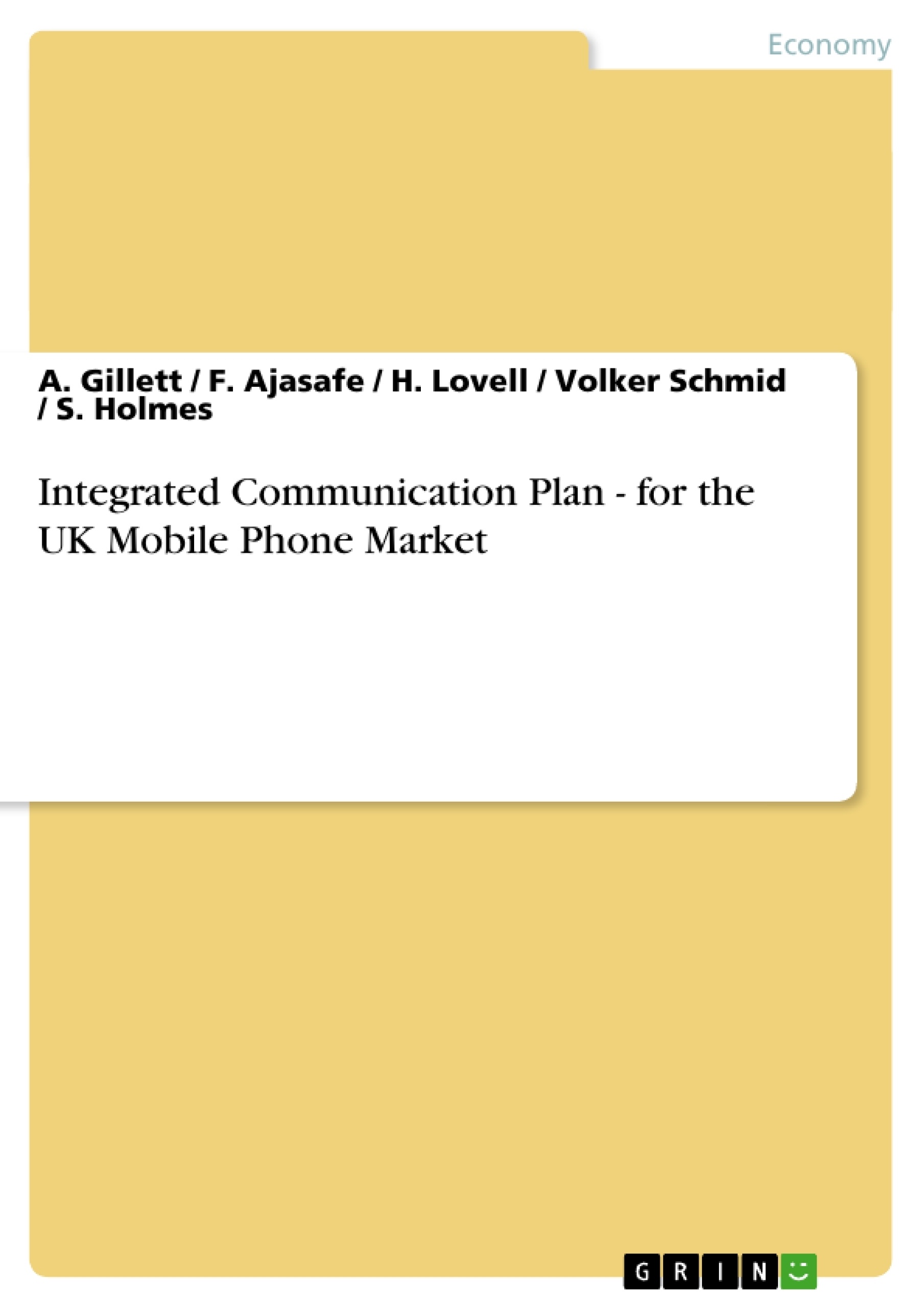This report outlines a new IMC strategy for the ‘Siemens Mobile’ brand, which, despite being a well recognised brand, has yet to make a strong impact within the 16-24 year old age group. It also contains an in depth analysis of the target market, and as well as a breakdown of the current position and image of Siemens Mobile.
The target market for this segment has many unique attributes, which make it unusual, but one which is potential very profitable. The 16-24 year old group is very fashionable, sociable, and concerned with social acceptance, but at the same time wishing to display a degree of ‘individualism’.
Siemens mobile is currently has an image of a focused, efficient, technologically advanced company with a reputation for quality engineering. They are currently positioned towards the ‘older’ business class clients, who value quality and engineering excellence.
In order to appeal to the 16-24 year old market, a re-branding and re-positioning of the ‘Siemens Mobile’ brand will need to occur. A new, fun, trendy, fashionable, energetic, and youthful brand of ‘Sie Mobile’ (pronounced ‘see-mobile’) will be introduced which will appeal to younger people. This new brand will be closely correlated to the attitudes and values identified within the 16-24 age group.
‘Sie Mobile’ will be introduced in several stages, based on the customer’s buying process (Holder and Watson’ pyramid model; IDM, 2004). It will utilise both established and new marketing techniques including television, radio, magazine, internet, SMS, and billboard campaigns. This strategy will emphasise the fun, fashionable, and technological features of the brand, and will cost approximately £8,750,000 to launch.
Inhaltsverzeichnis (Table of Contents)
- Executive Summary
- Managing Integrated Marketing Communications
- Market Development
- Target Market Analysis
- Socio-demographic Characteristics
- Psychographic Analysis
- Behavioural Aspects
- Needs of the Target Audience
- Summary
- Market Analysis
- Payment Options
- New Generation Models
- Advertising and Promotion
- Challenges
- Corporate Assessment
- Summary
- Problem Identification
- Sub-Problems
- Problem Resolution: Marketing Strategy
- IMC Drivers
- Direct Marketing Mediums
- Mobile-Marketing
- Recommended IMC Strategy
- Introduction to 'Sie Mobile'
- Evaluation Procedure
- Flexibility
- Pricing
- Conclusions
Zielsetzung und Themenschwerpunkte (Objectives and Key Themes)
This report outlines a comprehensive integrated marketing communications (IMC) strategy for Siemens Mobile, aiming to establish a stronger presence within the 16-24 year old demographic. The report analyzes the target market, examines Siemens Mobile's current position and image, and proposes a rebranding and repositioning strategy to appeal to this younger audience.
- Target market analysis and identification of key attributes
- Assessment of Siemens Mobile's current brand image and positioning
- Development of a rebranding strategy for Siemens Mobile, including a new brand identity
- Implementation of an IMC campaign targeting the 16-24 age group, utilizing various marketing channels
- Evaluation of the effectiveness of the IMC strategy.
Zusammenfassung der Kapitel (Chapter Summaries)
The report begins with an analysis of the target market, examining the socio-demographic characteristics, psychographic profiles, and behavioral patterns of 16-24 year olds. It then evaluates the current market position of Siemens Mobile, considering factors such as payment options, new generation models, advertising and promotion strategies, and challenges faced by the brand. The report identifies key problems and proposes a comprehensive marketing strategy, highlighting the use of direct marketing mediums and mobile marketing. It outlines a recommended IMC strategy for Siemens Mobile, including the introduction of a new brand identity, 'Sie Mobile', and details the evaluation procedure and flexibility of the strategy.
Schlüsselwörter (Keywords)
The primary keywords and focus topics of this report include integrated marketing communications (IMC), target market analysis, brand positioning, rebranding, Siemens Mobile, 'Sie Mobile', 16-24 year old demographic, direct marketing, mobile marketing, and evaluation.
- Quote paper
- A. Gillett (Author), F. Ajasafe (Author), H. Lovell (Author), Volker Schmid (Author), S. Holmes (Author), 2005, Integrated Communication Plan - for the UK Mobile Phone Market, Munich, GRIN Verlag, https://www.grin.com/document/38121



